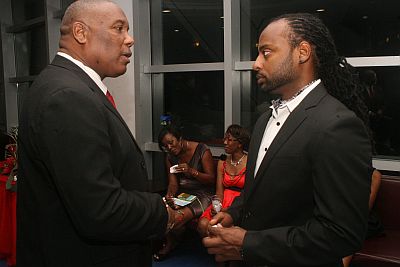media_artricles :: 2014
Serrette: Policies to modernise NAAA coming
Sean Nero :: Trinidad Guardian :: 09.01.2014Major changes are coming for the sport of track and field as the National Association of Athletics Administrators (NAAA) moves to modernise its operations, as well as that of its member clubs says newly re-elected president Ephraim Serrette.
Following the organisation’s rebranding exercise that began with its name change back in 2009 from the National Amateur Athletics Association, the national sporting organisation (NSO) last year adopted a new constitution that incorporates the body as a not for profit organisation registered under the Companies Act.
With these new guidelines for the NSO’s operations in place, Serrette said plans to revise the NAAA 17-member executive downward are coming in preparation for the implementation of its corporate structure.
But that’s not all. The NAAA, like other national track and field bodies around the world, will move to adopt a four-year term of office for officers; the model used by the International Association of Athletics Federations (IAAF).
The present life of an NAAA executive was three years. Of equal importance to the NSO was educating its stakeholders on a new vision for the sport and the protection of its athletes, too, especially those seeking to develop their athletic prowess overseas.
“If you accept a scholarship at school that does not have sprint programme and you’re a sprinter, then what are you doing there? There are a number of things that needs to be taken into consideration before accepting a scholarship.
We have athletes leaving here and going to run up and down in school hall ways. It is a very serious problem; accepting US scholarships. Parents say my child going to the US, not understanding that the quality of education, the competition, where they are going. We want to give some advice on that,” said Serrette.
He added, “Everybody wouldn’t be able to go LSU (Louisiana State University). Everybody wouldn’t be able to go UCLA (University of California of Los Angeles). We have people in Minnesota and all these cold places. Some advice will be given to them on that.” The NAAA has set itself a sixmonth target–starting this January– to effectively implement new constitutional reforms to better govern its operations.
As part of the process, said Serrette, a board will be appointed with a president at the helm, before the position of chief executive officer was advertised. Serrette said, “One of our major achievements was rebranding (the NAAA) and putting the sport in position where we have re-opened our communication lines with all our athletes and coaches. These are the areas we have been focused on over the last couple of years.
That is what is going to work for us. We also plan in this term to do work on the club structure. We have a lot of clubs registered. We have over 54 clubs. They submit constitutions and they (are) supposed to have AGMs and we only have information on three. We need to fix that!”
There were major public squabbles between the NAAA, the Ministry of Sport and the Sport Company of T&T (SporTT) during 2013.
The most devastating was the doping issue that forced local athletes Semoy Hackett and Kelly Ann Baptiste to withdraw from the IAAF World Championships. Hackett had her provisional ban overturned and then was cleared by the Association to compete at “Worlds”. She subsequently returned home after the IAAF reinstates the ban pending an appeal to the Court of Arbitration for Sport on the matter.
Serrette in response to the friction between the NAAA and the State agencies said, “You don’t pelt stones at trees that don’t bear fruits! You pelt trees that have fruits. We are doing the right thing.
We see the Government as a facilitator so that the NSOs should be left to run the day-to-day business of the sport. We have the issue of interference. We have it in football, as well where the governing body (FIFA) could penalise them (clubs) once they have Government interference.
I don’t see it as wrangling. We are doing what we have been put there to do. We have to work with the Government because we are funded by them. I can boast that the NAAA is one of the Federations that go out and seek sponsorship and that was one of my goals from very early; to bring the federation to self-sufficiency.”
He then focused on this year’s exciting roster of international competitions that includes the Commonwealth Games, Central American and Caribbean (CAC) Games, World Junior Championships and CAC Junior Championships at which his athletes will aim to register more championship performances and ultimately sustain national adulation and stir greater pride among the populace.
Serrette said reforms to the structure in age categorisation of athletes in competition were coming, too, in keeping with IAAF revisions where even numbers will replace odd ones. The new categories are Under-10, 12, and 14, 16, 18 and U-20.
Staying with his development theme Serrette said following the success of last month’s NAAA workshop on event production and announcing held with the aim of improving the organisation’s meets, others covering topics such as club structure and management as well as how to choose accessing international scholarships in this quarter

Enlarge Image
Ephraim Serrette, left, president, NAAA with Tobias Ottley, executive manager, Elite Development and Performance Unit (EDPU) SporTT at the Spirit of Sport awards ceremony held at Queen's Hall in St Ann's, Port-of-Spain, on December 28. PHOTO: SEAN NERO

Close Window